Wendy Devlin
In Mexico the breaking of a piñata accompanies almost every festive occasion. I loved making and breaking piñatas before ever traveling to Mexico Experiences there brought home the fact that I was a latecomer to this wonderful and unique tradition.
The original, traditional shape of the piñata is the six pointed star although today countless forms are in use: animals, plants, flowers, devils etc. The clay pot or olla de barro that goes inside contains the fruit and candies or small toys. At a fiesta, the piñata suspends from above while blindfolded children try hitting it with a stick. Around the piñata the children sing:
Dale, dale, dale,
No perdas el tino
Porque so lo perdes
pierdes el camino.
Hit it, hit it, hit it,
Don’t loose your aim.
’cause if you lose it
you’ll loose your way!
One piñata tradition says : you go around life with your eyes covered, trying to find the good things and working hard to get them. Another one says the piñata symbolizes the devil: you have to hit him hard to make him let go of all of the good things that he has stolen.
As I incorporated this tradition into our life, the magic and the fun of the piñata instantly adapted from Mexico culture to mine. The inclusion of a piñata into any children’s party turns the event into a fiesta! Ollas being unavailable in Canada, paper maché over a balloon performs the trick. Several days later, after the maché dries, the piñata is either painted or decorated with colorful strips of crepe paper. At first my piñatas used the round shape of the balloon to create eggs, heads, pumpkins etc. Gradually bits of cardboard added to the basic shape for ears, legs and wings to flying pigs or fins and tails for tropical fish. A piñata is easily customized for every child. Around this time, our family took a second road trip from Canada to Mexico.
Every place had piñatas of every size and shape imaginable!
The imagination and creativity of the Mexicans knew no limits! Eagerly we entered our first piñata store. What a fantasyland! Piñatas hung from everywhere and colorful bags of candy bulged from the floor to ceiling shelves. The kid’s eyes bugged with amazement!
Three months of travelling exposed us to the many wonders of Mexico. But I had yet to catch anyone actually making a piñata. One day, while camping on the beach at Zipolite, Oaxaca, I watched the family who ran a nearby palapa restaurant, create their piñata. First they hung large pieces of card-board from the ceiling. Several people started cutting and pasting the card-board. Slowly “she” emerged over the afternoon: a lovely life-size Mexican mermaid. Soon the mermaid met the intended destiny of all piñatas: to be filled with goodies and smashed to bits! During Santa Semana (Easter) paper maché Judases are loaded with fireworks and blown up amid shouts of delight. All piñatas have their fulfillment at the moment of their destruction.
I continue to make piñatas resembling long necked swans and calico cats with top hats and tails, wicked witches or jolly santas…or what ever the occasion suggests. They make a unique and welcome birthday gift especially if made in the shape of a child’s favorite animal. I look forward to visiting Mexico again, sharing with those kind and generous people, their piñata tradition. Bring a piñata with you and turn a party into a fiesta!
Piñata Images Copyright © 1999 Maria Elena. All Rights Reserved Worldwide.
Published or Updated on: December 1, 1997

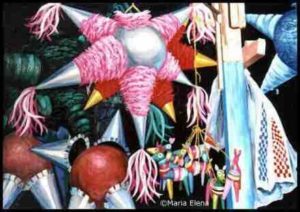
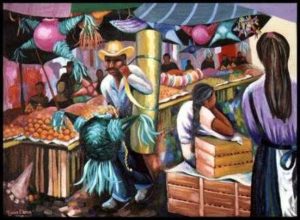
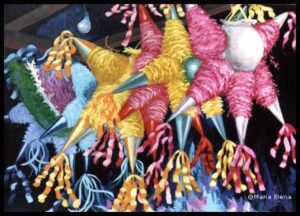
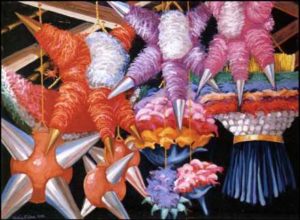
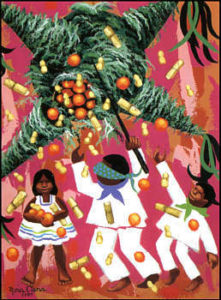
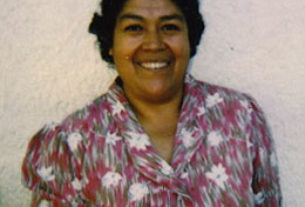
I love the creativity and thought they put when creating a pinata it’s really interesting and you can see the meaning of it due to its colors and shape
I’m still making piñatas. Thirty years later after making the first ones and many trips to Mexico.